Bicycle brake levers: what are there and how not to be mistaken with the choice?
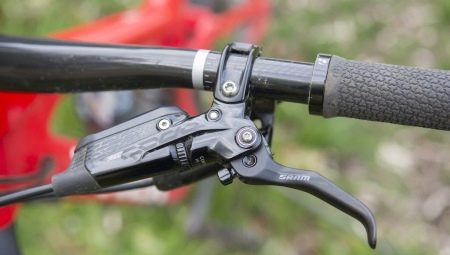
People have been riding bicycles for many decades and have achieved great art in this. However, no acceleration will be enjoyable if it is impossible to stop. And stopping depends a lot on what the bike brake handles are. What are they like, how not to be mistaken with the choice?
Peculiarities
The choice of such handles (and the brake systems themselves) will have to be approached with great care. Sometimes a few hundredths of a second and millimeters separate a successful outcome from a tragedy. This is why every cyclist should choose the brakes for their bike on their own, and not according to a template. A lot depends on:
- experience;
- riding style;
- level of physical fitness;
- reaction rate;
- the purposes of using the bike and its performance.
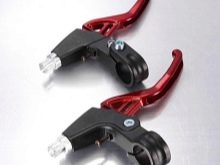

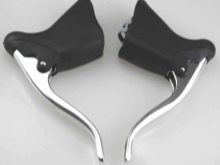
Basic types
Cycling fans most often use special handles designed for 1 or 2 fingers. This limitation becomes a serious advantage for athletes, because otherwise it is impossible to hold the steering wheel escaping from the hands. For your information: these control mechanisms are usually used in conjunction with powerful disc brakes. They will be able to easily stop the bike, even if the rider is manipulating with one finger.
But a road bike needs "something simpler." More precisely - handles of the 3-finger or 4-finger type. You will have to press on them with your whole palm, which is not very compatible with active riding. Such braking devices are traditionally long in length.
In the past, such lengthening was quite reasonable, since there was no other way to increase the pressure of the hydraulic brake or cantilever.
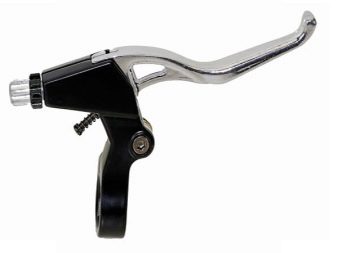
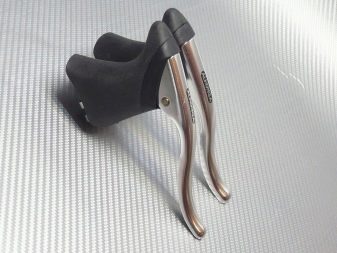
The ram handles are mainly combined with the Dual Control shifters. In this version, the handle allows you to change gears - and this solution is quite convenient. You can make 2 grips to the wheel. Gear shifting is possible in both positions. On the same handlebars, duplicate handles are provided, which are placed in the gap between the brake jackets on cyclocross bikes.
On children's bicycles, in contrast to adults, pedal brakes are predominantly used. But sometimes such designs can be found on an adult budget class bike. The leg pressure is much stronger than the hand pressure. The pedal design is bad in that it only allows for a meager set of gears. A separate type is brake levers for hydraulic braking. In expensive hydraulics, adjustment (fine tuning) is provided. The general universal rule: the higher the price, the more flexible the settings.
The default is to change the distance from the handle to the grip. This option is designed to accommodate people with a wide variety of fingers. The vast majority of handbrake control designs also allow you to adjust the distance to the handlebar. The choice of this parameter is determined by convenience. But even with the strongest pressure, the handle should not come into contact with the steering wheel.

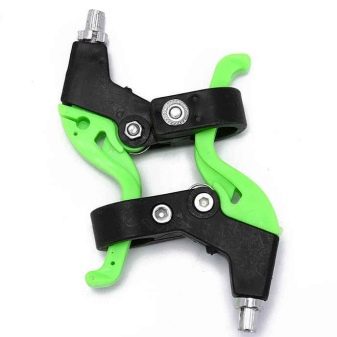
Additional nuances of choice
Note that e-bike models should be different from mechanical bike models. A handle must be provided to turn off the engine. The signal to the controller is synchronized with the pulling of the cable to block the mechanical components of the device. Many kits include 2 sticks at once. Their execution is standardized, so you can put any equipment on any electric bike of your choice.
But that doesn't mean that even the lightest carbon bike is easier to stop than an electric bike. Much also depends on the adjustment. If a change in the lever arm is foreseen, compatibility with various types of brakes is guaranteed. All mechanical brakes (except for road bikes) have adjustable cable tension.
The mechanical design may provide for a quick release of the cable (allowing the wheel to be removed).
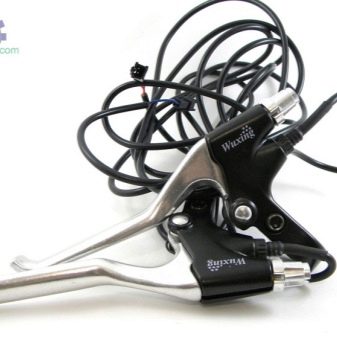

Hydraulic brakes are often made with full stick free play, which can however be adjusted. Quality handles are equipped with a split clamp. Such designs make it easy to remove the brake. Some handles do not have a clamp, they are mounted on an external universal clamp that simultaneously holds two more shifters. The brake stick Shimano Tourney EF65.
This model can be put on entry-level mountain bikes (as well as those intended for non-professional athletes). The design combines trigger shifters and V-BRAKE sticks. An alternative is model BL-T780 DEORE XT... It is done with the expectation of 3 fingers of the right hand. The design is compatible with V-Brake brakes.
You can put on the steering wheel Stern cgrip-5 city Handlebar grips... The material of construction is optimal for the convenience of cyclists. The grips will not slip out of the hand and will absorb minor impacts. An alternative is considered Tektro ML520... The handle comes in handy for both V-Brake and shifters, the aluminum construction is designed for 2-finger control.
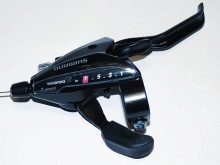
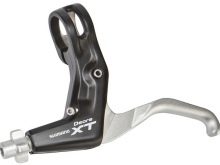

See below for how to install the brake levers.








